“Do you have your eyes on the road or not? Can’t you see there are vehicles coming?”, yelled a motorcycle rider at a few pedestrians waiting to cross the Rajiv Gandhi IT Expressway on foot. He did so as he sped past the Tidel Park signal, swerving left, on his way to East Coast Road. He missed colliding with the pedestrians by some inches.
A recent study on accidents involving pedestrians in Chennai raised some alarming facts about exactly how unsafe the city is for those who navigate it on foot. The study was conducted by Karthikeyan Baskar, a Chennai-based urban planner, and presented at the Urban Mobility India Conference.
The Rajiv Gandhi IT Expressway is part of the IT corridor, which has been a pedestrian accident hotspot, according to the findings of the study. Apart from the IT Corridor, Koyambedu, Egmore, Chennai Central and George Town have also been identified as pedestrian accident hotspots in Chennai.
The 2019 Comprehensive Mobility Plan shows that Chennai lacks basic pedestrian-friendly infrastructure. This is despite pedestrians making up 25% of the mode share in Chennai, making it the second-most dominant mode of mobility in the city after two-wheelers.
Apart from the driving behaviour of vehicles responsible for the accidents, the study also shows that there is a huge gap in pedestrian-friendly infrastructure in the city which acts as a contributing factor to injuries and fatalities suffered by pedestrians.
Read more: Poor administration turns Padur roads into accident hot spots
Pedestrians fatalities in road accidents in Chennai
The 2021 NCRB report states that the highest number of road accidents among all metropolitan cities in India happened in Chennai.
In 2022, 179 people out of the 508 killed in road accidents were pedestrians according to data from the Greater Chennai Traffic Police (GCTP).
Pedestrians have been victims of many accident-induced fatalities in the city. With a rise in pedestrian fatalities, the study looks at the spatial distribution of pedestrian accident patterns from 2017 to 2021, using the data from the First Information Reports.
The table given below looks at the percentage of pedestrian deaths in all road accidents, as per the study and the recent GCTP data.
| Year | Percentage of pedestrian deaths in all road accident fatalities in Chennai |
| 2017 | 34% |
| 2018 | 33% |
| 2019 | 34% |
| 2020 | 25% |
| 2021 | 28% |
| 2022 | 35% |
Two-wheelers and buses cause most pedestrian accidents and fatalities
Pedestrians face more accidents caused by two-wheelers in Chennai.
Of the 8642 pedestrian victims of accidents from 2017 to 2021, 4155 suffered accidents due to two-wheelers. Of the 4155 pedestrians, 549 died.
Cars, buses and autos also contributed to pedestrian road accidents according to the study.
“However, the fatality rate of pedestrians getting hit by buses is the highest, followed by cars and then two-wheelers,” says Karthikeyan. “But the number of crashes due to two-wheelers is higher.”
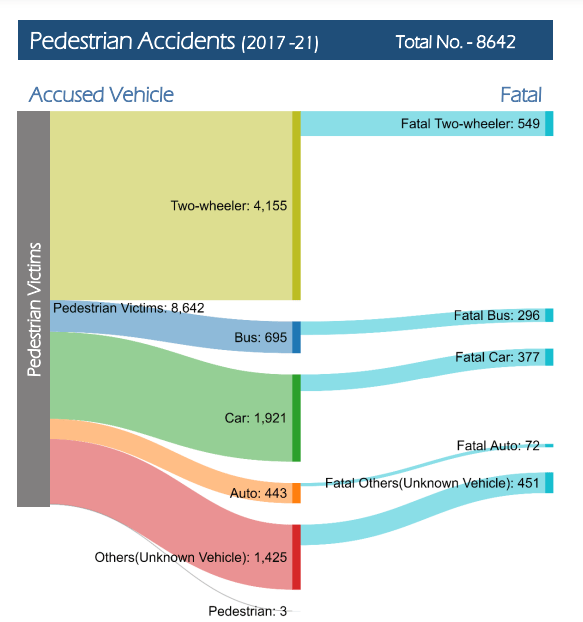
Read more: Road accidents in Chennai and what can be done to prevent them
Trends observed in accidents involving pedestrians in Chennai
Causes of pedestrian accidents: Out of the 8642 pedestrian accidents from 2017 to 2021 in Chennai, 5021 of them were due to overspeeding. The next major cause is rash driving, which has resulted in 1390 accidents. Other causes include careless driving and drunken driving.
Temporal trend of road accidents: From Monday to Friday, the maximum number of pedestrian accidents happened between 9 am to 11 am and 5 pm to 7 pm. During the weekends, especially on Sundays, 7 pm saw the most number of accidents.
“During Sunday evenings, many people might be returning from Puducherry or other destinations via the IT Corridor, making it an accident-prone area and window of time,” says Karthikeyan.
Age-wise analysis: Children and senior citizens faced more fatal road accidents than other age groups.
“If we design a children-friendly city, it will be friendly to all age groups,” says Karthikeyan.
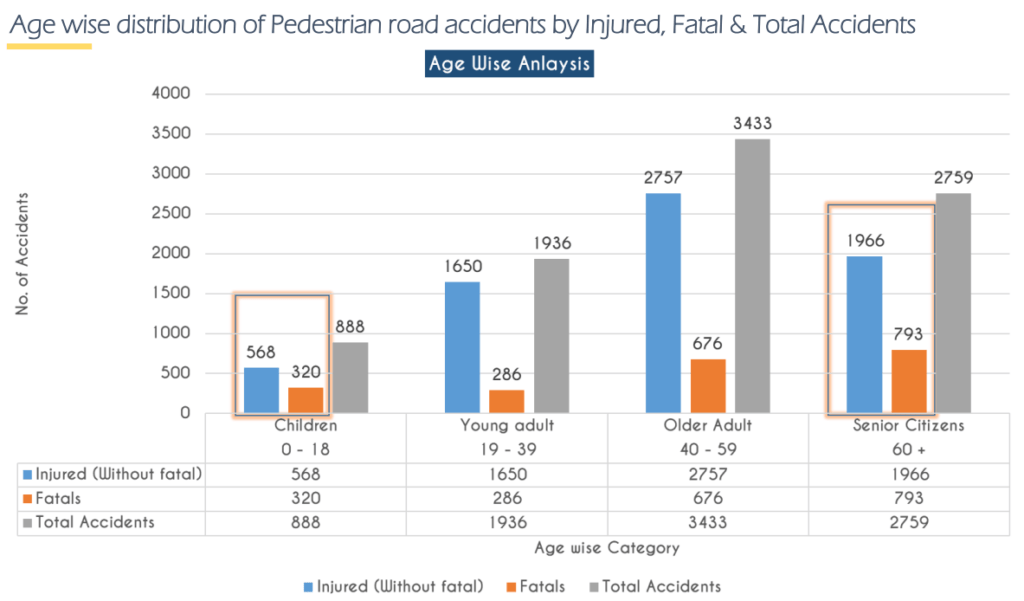
Pedestrian fatalities due to pedestrian carelessness: Out of the 8642 cases that happened from 2017 to 2021, only 84 cases can be attributed to pedestrian carelessness.
In other words, less than 1% of pedestrian accidents happened due to their own carelessness.
Lack of pedestrian-friendly infrastructure in accident hotspots in Chennai
A spot check at various accident hotspots listed in the study reveals glaring gaps in infrastructure such as footpaths, road crossings, speed bumps and signage that improve road safety for pedestrians.
Koyambedu: Koyambedu, especially near the partial Cloverleaf interchange, is a pedestrian accident hotspot. Pedestrians are predominantly hit by cars, buses and two-wheelers in Koyambedu, according to the study.

Moreover, more accidents in Koyambedu happen between 6 am to 9 am and post 7 pm until dawn. The study pegs that overspeeding is the major cause of pedestrian accidents in Koyambedu.
The lack of footpaths leading up to the Omni Bus Terminus and the lack of signal and road crossings near the bus stand and metro station makes roads in Koyambedu extremely dangerous for pedestrians.
IT Corridor: With IT companies dotting the area, and the road also leading to holiday spots of Mahabalipuram and Puducherry, this stretch has seen many pedestrian accidents. The two major kinds of vehicles that cause accidents are cars and two-wheelers.
“We do not find many autos in this area,” says Karthikeyan.
Pedestrian accidents in this area take place between 5 pm and 7 pm. This coincides with the peak traffic hours as employees leave offices and head home during this time.
The study also points out that drunken driving and rash driving are common here due to the presence of many bars and pubs that serve alcohol.

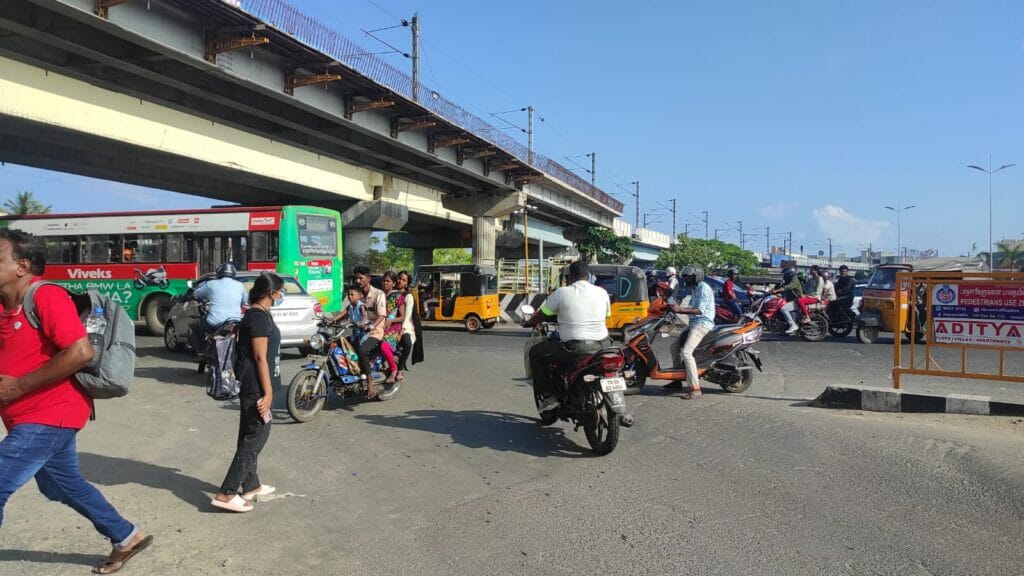
“Despite foot-over bridges being present on the stretch, people still prefer crossing on road surfaces,” observes Karthikeyan, adding that it could also lead to pedestrian accidents. “Rajiv Gandhi IT Expressway is a wide road where vehicles are normally found speeding.”
Chennai Central, Egmore and George Town: It is common to see pedestrian road accidents in George Town due to buses and autos, owing to the narrower lanes, notes the study.
Egmore and Central also see many autos causing accidents involving pedestrians as per the study. More accidents in these areas take place between 9 am and 11 am.
“This trend is because many people use autos to and from Egmore and Central Railway stations, making it a popular mode share in these areas. In George Town, there are a lot of schools where autos ferry students,” explains Karthikeyan. “Also, rash driving is the major cause of accidents here. So, we can infer that autos generally drive rashly, causing more pedestrian accidents.”
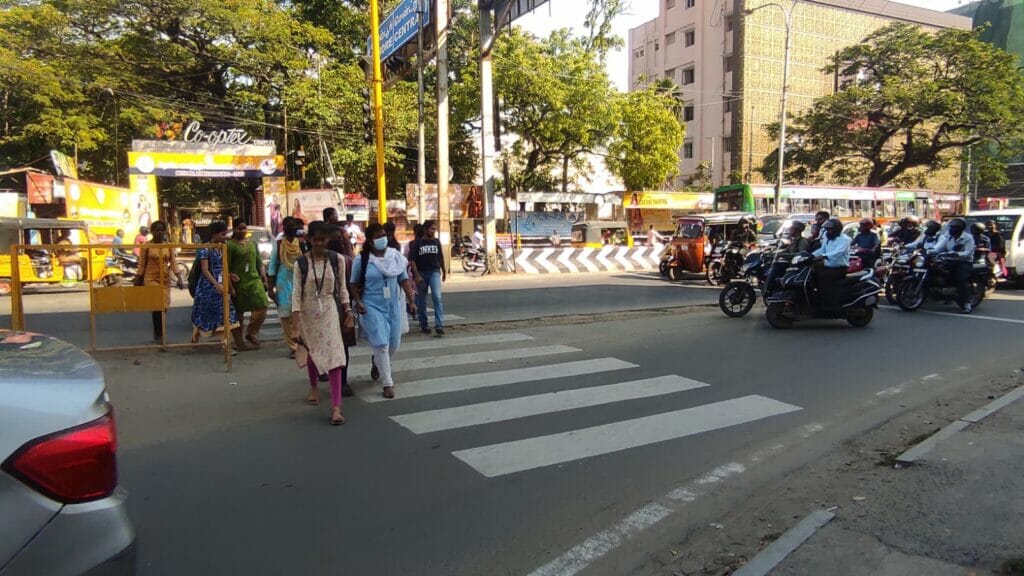
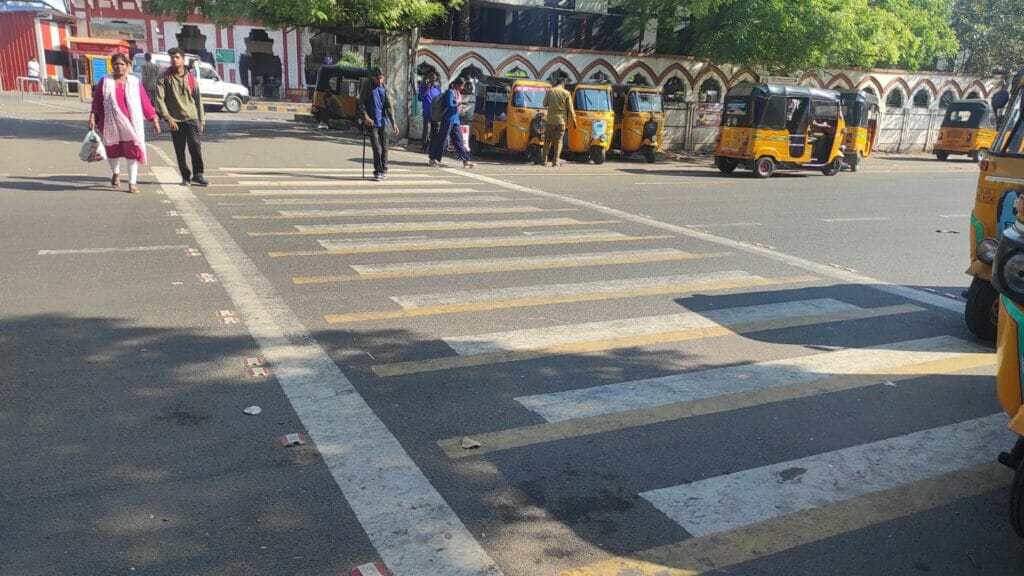
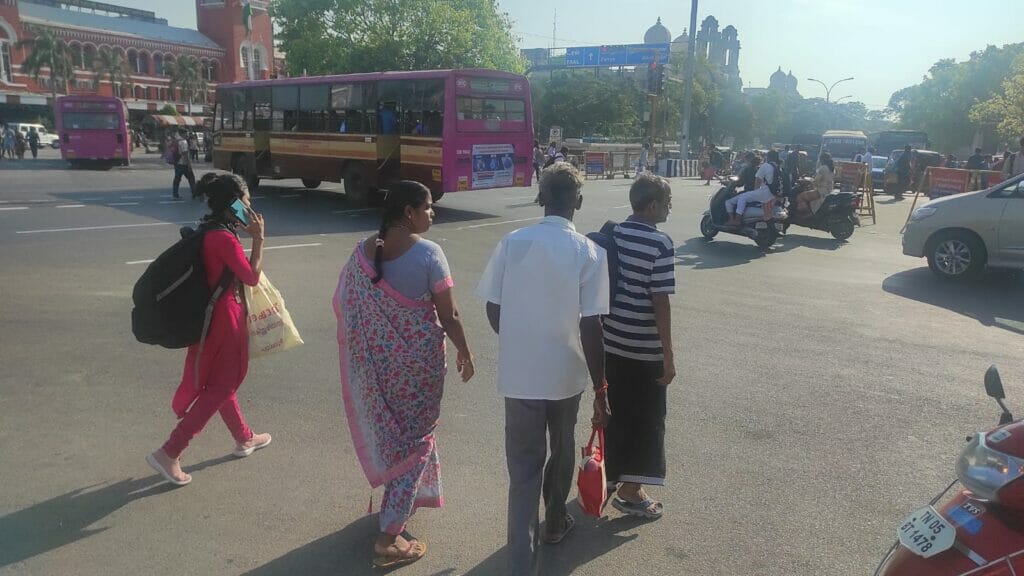
Parameters for gauging pedestrian safety in Chennai
Karthikeyan shares some parameters through which pedestrian-friendly infrastructure could be judged in Chennai.
- crosswalks
- stop signage
- traffic and pedestrian signals at intersections
- median
- speed bumps
- wide sidewalk
- trees
- public seating
There was no stop signage in the accident hotspots during our spot checks. While most wide roads had medians, not every road had planned crosswalks. With respect to signals, pedestrian signals were scant while traffic signals were prevalent only in some areas. However, the timing of the signal did not match the time needed for pedestrians to cross the road, forcing them to rush to cross the road.
Speed bumps were also scant in these areas. Except for the area near Chennai Central, hardly any of the accident hotspots had defined sidewalks too.
Koyambedu, Central and IT Corridors did not have much green cover near the major roads. The presence of trees has reduced the accident rate on roads, say studies.
With respect to seating, only Chennai Central had seating facilities. However, the seats were too smooth and reflected heat, making them unusable by pedestrians on sunny days.
A two-pronged strategy involving the enforcement of traffic behaviour and the creation of pedestrian-friendly infrastructure is necessary to prevent road accidents in Chennai.
With privately owned vehicles increasing in the city, the traffic police, local government and other road authorities must look into planning roads and public spaces keeping such parameters in mind in order to reduce road accidents, especially those involving vulnerable groups such as pedestrians.
The situation is no different in front of Perambur Railway Station or elsewhere across the city. Pedestrian Safety has always been the last priority for the local administration or the enforcement agencies.